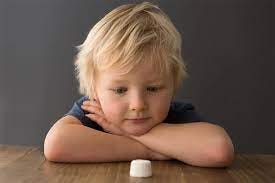Is there a way to measure risk aversion in kids?
I’ve recently been thinking a lot about how entrepreneurs talk about risk. (I think I’ve been spending too much time with entrepreneurs, but I digress.) A number of them allude to conceptions of risk that they had as kids (“I’ve always surprised people with the extremely risky things I was willing to try, even at a young age,” “I was already coming up with radical, totally insane ideas…,” “I broke my arm multiple times because of…”), and how they think it’s a static trait that they’ve had all throughout their childhood and into adulthood.
It made me think of the marshmallow experiment and whether there could be some equivalent test for measuring risk aversion that researchers might try out (and perhaps validate, or perhaps not, but more on that later…).
For those of you not familiar with the Stanford marshmallow experiment, it was a study conducted in 1972 by Walter Mischel, a well-known professor at Stanford University. What Mischel was curious about was self-control and delayed gratification. The experiment itself was simple enough (or at least the classic version): Put a treat (two animal cookies, five pretzel sticks, a marshmallow, whatever) on a table, in front of a child. Tell the child that they can eat the treat, but if they wait 15 minutes without eating it, they’ll get double the treat.
One of the early conclusions was that children who were able to delay gratification (by employing techniques that ranged from covering their eyes to not look at the treat, sitting on their hands so that they didn’t grab the treat, singing to distract themselves from the treat, and so), were those who tried not to think about the treat at all, rather than those who focused on the double treat that they’d get in 15 minutes.
Later, the results were extended to consider whether demonstrating self-control and delayed gratification as a kid might be indicative of success later in life. For example, being able to exercise self-control as a kid was found to be correlated with higher SAT scores.
I should say that the results of the (various versions of this) experiment have been revisited many times, and lots of debates have ensued around what the actual explanation is (could family environment, or socio-economic status be responsible, for example)? But regardless, it’s an interesting thought experiment on whether there is a way to measure certain characteristics or tendencies of someone as a child—characteristics or tendencies that might be predictors of later outcomes.
And so I wonder if there is a way to measure risk aversion in kids and harness it (regardless of whether someone is determined to be highly risk averse, or highly risk-seeking). If there is a way to cultivate it in a healthy way, leading to more innovative ideas or more novel and useful applications of existing technologies, for example.
These would have to be tailored to be age appropriate, of course. But here’s some ways that we might think about risk (and measuring risk aversion) in kids:
1. Measure how far away (or how close by) two rocks (or cinder blocks) need to be for kids to hop from one to the next.
2. Give a child 5 pieces of candy, and determine how many pieces of candy they’d need to get back (10 pieces? 20? 50?... for a 2x? 4x? 10x? return) to risk in all in a coin flip?
3. Put a treat at increasingly closer distances to a hot fire, and see how close a child is willing to go to danger (burn risk) to get the treat (yes, I know this one is very dangerous and would need extreme levels of adult supervision… I’m just brainstorming… and as an aside, we do know something about another Stanford experiment outside of the marshmallow experiment: one entitled the Stanford Prison experiment, which should give you at least some idea of how sadistic psychological experiments can actually get).
4. See how likely a child is willing to do something that he or she knows that their parent/guardian will be very angry about (okay, I know this one is much less specific… I’m obviously running out of steam here, and sadly, can’t come up with more than 4 ideas.).
What do you think? What other ideas can you think of?



